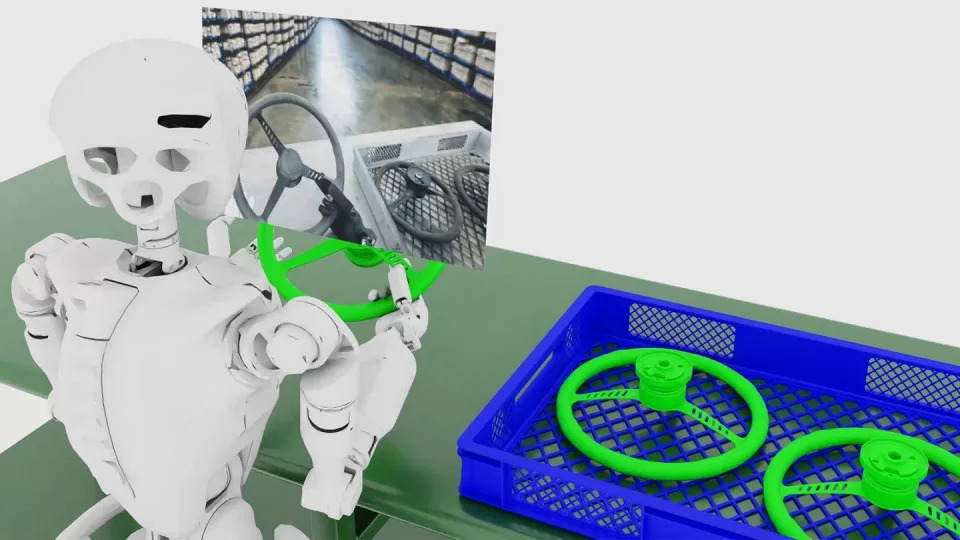Advancing the Future of Robotics and Autonomous Vehicles with Nvidia Cosmos
In a significant move towards democratizing physical artificial intelligence (AI) system development, Nvidia has unveiled Nvidia Cosmos. This innovative platform is designed to accelerate the progress of robotics and autonomous vehicle (AV) sectors by providing developers with a simplified approach to generating massive volumes of photorealistic, physics-based synthetic data.
The Complexities of Physical AI Model Development
Developing physical AI models is a complex and costly process that requires vast amounts of real-world data and extensive testing. This process can be time-consuming and resource-intensive, making it challenging for developers to bring their ideas to life. Nvidia acknowledges these challenges and has created Cosmos to address the needs of the robotics and AV communities.
Key Features of Nvidia Cosmos
Nvidia Cosmos integrates state-of-the-art generative world foundation models, advanced tokenisers, guardrails, and a high-performance video processing pipeline. The platform provides developers with a range of tools and features that enable them to train and evaluate their existing models more efficiently. Some of the key features of Nvidia Cosmos include:
- Cosmos World Foundation Models (WFMs): These models provide developers with a simplified approach to generating massive volumes of photorealistic, physics-based synthetic data.
- Fine-tuning: Developers can customise their models by fine-tuning Cosmos WFMs to suit their specific needs.
- Open Model Licence: Nvidia has made the Cosmos models available under an open model licence to accelerate progress in the robotics and AV sectors.
Accelerating Progress in Robotics and AV
The development of physical AI systems is a critical step towards achieving autonomous vehicles, robots that can perform complex tasks, and other innovative applications. By providing developers with a simplified approach to generating synthetic data, Nvidia Cosmos has the potential to revolutionise the field.
Early Adopters of Nvidia Cosmos
Nvidia has already gained support from leading robotics and automotive companies, including 1X, Agile Robots, Agility, and ridesharing platform Uber. These companies are leveraging Nvidia Cosmos to accelerate their research and development efforts in the areas of robotics and autonomous vehicles.
Quote from Nvidia Founder and CEO Jensen Huang
"The ChatGPT moment for robotics is coming. Just as large language models are transforming AI, world foundation models will be pivotal to the evolution of robots and AVs." – Jensen Huang
However, not all developers have the expertise or resources to train their own models. We created Cosmos to democratise physical AI and make general robotics accessible to every developer."
Nvidia’s Acquisition of Run:ai
In December 2024, Nvidia completed the acquisition of Israeli AI company Run:ai after undergoing antitrust scrutiny in a deal valued at $700m. This acquisition has further strengthened Nvidia’s position in the field of AI and reinforced its commitment to accelerating progress in robotics and AV.
Conclusion
Nvidia Cosmos is a game-changing platform that has the potential to revolutionise the development of physical AI systems. By providing developers with a simplified approach to generating synthetic data, Nvidia has democratized access to this critical technology. As the robotics and AV sectors continue to evolve, Nvidia Cosmos will play a pivotal role in shaping the future of these industries.
Related Articles
- Nvidia’s Acquisition of Run:ai: What It Means for AI Development
- The Future of Robotics: How Nvidia Cosmos is Revolutionizing Physical AI
- Democratizing Access to Artificial Intelligence: The Impact of Nvidia Cosmos on the Robotics Industry
Sources
- Nvidia Press Release: Introducing Nvidia Cosmos
- Verdict Article: Nvidia introduces platform for physical AI system development

